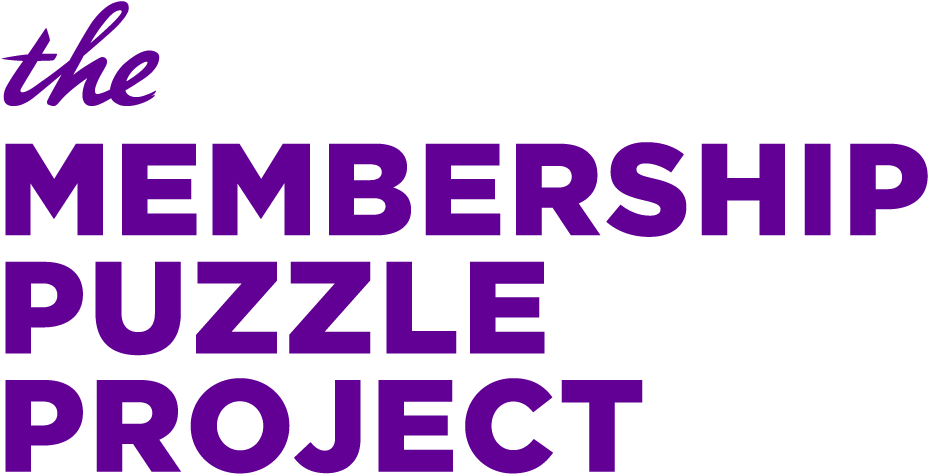I’m excited to share the latest from the Membership Puzzle Project: We’ve found our Research Director! Emily Goligoski, formerly of The New York Times and Mozilla, will be joining the puzzle starting May 30.
Refresh my memory. What’s the Membership Puzzle Project?
MPP is a collaboration between De Correspondent and New York University, with $515,000 in funding from the Knight Foundation, Democracy Fund, and First Look Media in the U.S. We’ve set it up for knowledge transfer in two directions:
- Teaching journalists in North America what De Correspondent in the Netherlands has learned about membership models in news that optimize for trust.
- Teaching De Correspondent what American news sites have learned about turning readers and listeners into members. (Quick distinction: Subscribers pay their money and receive a product. Members not only value the product, they believe in the cause and support it in ways that go beyond giving money.)
A third goal is help build a “community of practice” around the social contract that has to exist between a news site and its members. We hope to identify to each other people who know a lot about that practice. A fourth goal is to help the founders of De Correspondent bring their model to the U.S., which they plan to do in a year or so. By bringing good knowledge to bear on the problem of adapting to a different market we can increase their chances of success.
Tell me more about this new Research Director
The project officially begins this week and runs for one year. And today we take a big step by naming a skilled and experienced research professional to work full-time on the problems I just outlined. She is Emily Goligoski, currently a user experience research lead at The New York Times. Before that she worked at Mozilla, the free software company that makes the Firefox browser, where she researched the educational software design space.
Emily has a master’s degree from Stanford’s Learning, Design, and Technology program, where she worked in the “d.school.” Her expertise is in listening carefully to users, distilling insights from what they say, and then designing systems that are faithful to those insights. In my view she is the perfect person to be the Membership Puzzle Project’s research director. Emily will start May 30, after finishing up her projects at The New York Times.
“I’m a big believer in using cross-disciplinary methods to solve thorny problems. And I’m a proponent of this project’s collaborative approach to working across journalism, academia, technology, design, and psychology to provide sustainable paths forward for the news industry,” she told me. “De Correspondent has earned a unique and powerful reputation. I’m eager to learn how they’ve built their reader-centric newsroom. Having learned a great deal in conversations with New York Times readers, I’m excited to see what new findings we can uncover to help independent journalism survive and thrive.”
As soon as Emily is on board, we will begin reaching out to news sites that have experimented with membership models, and to the people who have designed them. We will be visiting Amsterdam to interview De Correspondent’s team about their methods and discoveries. We’ll be talking to the digital creative agency Momkai, cofounder of De Correspondent, to learn about their design philosophy of “cultivating calm.” And we’ll be conducting a literature review. (This is an example of the literature around membership in news.) We will also be talking to the people we have in mind when we say “members,” in order to understand in refined detail what motivates them to join the cause of supporting quality journalism.
Can I play a part in the puzzle?
Knowledge-sharing is fundamental to the project, so you can expect to find out through monthly updates what we’re learning as we go about this work. A method we hope to follow is to go public with our questions once we name and frame them properly, leaving white space underneath. Then we can plug in the answers as we uncover them.
We call it the membership “puzzle” because there are a lot of pieces to it beyond asking people for money to do journalism: optimizing for trust, the engagement ethic, writers and readers working together, the role of editors and editorial judgment, transparency between a news site and its users, the social contract I mentioned, the independence required for hard-hitting and responsible journalism, cultural attitudes that come into play across different countries and social groups.
Click here to sign up for updates to the project. And email us if you have a question for us or if you can supply us with a piece of the puzzle. That includes literature for our review: self studies, academic articles, news reports, blog posts, or data sets that tell the story of membership in news. Send it our way, and we may share your insight publicly.
Meanwhile, welcome to the puzzle, Emily Goligoski!

